The Miocene is the first geological epoch of the Neogene Period and extends from about 23.03 to 5.333 million years ago (Ma). The Miocene was named by Scottish geologist Charles Lyell; the name comes from the Greek words μείων and καινός and means "less recent" because it has 18% fewer modern marine invertebrates than the Pliocene has. The Miocene is preceded by the Oligocene and is followed by the Pliocene.

Struthionidae is a family of flightless birds, containing the extant ostriches and their extinct relatives. The two extant species of ostrich are the common ostrich and Somali ostrich, both in the genus Struthio, which also contains several species known from Holocene fossils such as the Asian ostrich. The common ostrich is the more widespread of the two living species, and is the largest living bird species. The extinct genus Pachystruthio from the Late Pliocene-Early Pleistocene of Eurasia is one of the largest birds ever.
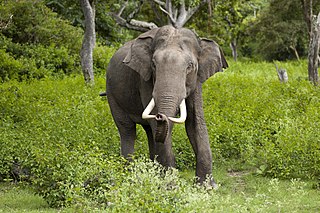
Elephantidae is a family of large, herbivorous proboscidean mammals collectively called elephants and mammoths. These are large terrestrial mammals with a snout modified into a trunk and teeth modified into tusks. Most genera and species in the family are extinct. Only two genera, Loxodonta and Elephas, are living.
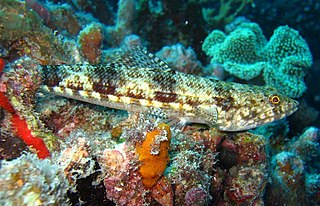
Aulopiformes is a diverse order of marine ray-finned fish consisting of some 15 extant and several prehistoric families with about 45 genera and over 230 species. The common names grinners, lizardfishes and allies, or aulopiforms are sometimes used for this group. The scientific name means "Aulopus-shaped", from Aulopus + the standard fish order suffix "-formes". It ultimately derives from Ancient Greek aulós + Latin forma, the former in reference to the elongated shape of many aulopiforms.

Berycopsis is an extinct genus of marine ray-finned fish from the Late Cretaceous period. Fossils are known from England, Germany, and Lebanon. A potential specimen is known from the Czech Republic.
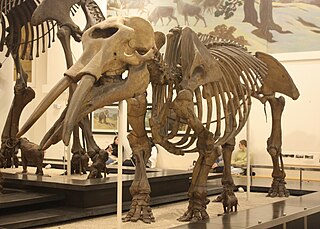
Gomphotherium is an extinct genus of gomphothere proboscidean from the Neogene of Eurasia, Africa and North America. The genus is probably paraphyletic.

Crocodylomorpha is a group of pseudosuchian archosaurs that includes the crocodilians and their extinct relatives. They were the only members of Pseudosuchia to survive the end-Triassic extinction. Extinct crocodylomorphs were considerably more ecologically diverse than modern crocodillians. The earliest and most primitive crocodylomorphs are represented by "sphenosuchians", a paraphyletic assemblage containing small-bodied, slender forms with elongated limbs that walked upright, which represents the ancestral morphology of Crocodylomorpha. These forms persisted until the end of the Jurassic. During the Jurassic, crocodylomorphs morphologically diversified into numerous niches, with the subgroups Neosuchia and the extinct Thalattosuchia adapting to aquatic life, while some terrestrial groups adopted herbivorous and omnivorous lifestyles. Terrestrial crocodylomorphs would continue to co-exist alongside aquatic forms until becoming extinct during the Miocene.

Cimolichthys is an extinct genus of large predatory marine aulopiform fish known worldwide from the Late Cretaceous. It is the only member of the family Cimolichthyidae.

Caproberyx is an extinct genus of marine acanthomorph ray-finned fish, possibly a holocentrid, from the Late Cretaceous.

Bananogmius is an extinct genus of marine ray-finned fish that was found in what is now North America and Europe during the Late Cretaceous, from the Cenomanian to the Santonian. It lived in the Western Interior Seaway, which split North America in two during the Late Cretaceous, as well as the proto-North Sea of Europe.
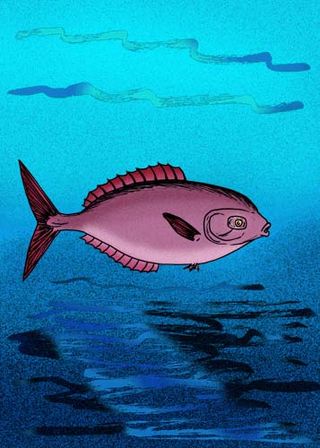
Beerichthys is an extinct genus of prehistoric marine ray-finned fish. It contains a single species, Beerichthys ingens, that was a member of the Ypresian London Clay fauna of lower Eocene England.
Bramoides is an extinct genus of marine ray-finned fish that lived during the lower Eocene. It contains a single species, B. brieni, known from the London Clay.
Aulopopsis is an extinct genus of prehistoric marine ray-finned fish that lived during the lower Eocene. It is considered a relative of lizardfish in the order Aulopiformes, but its exact taxonomic placement is uncertain. Some authorities place it with the Aulopidae, while others place it with the Giganturoidae.
Argilloberyx is an extinct genus of prehistoric marine bony fish that lived during the lower Eocene. It contains one species, A. prestwichae, known from the London Clay Formation on the Isle of Sheppey, United Kingdom. It is considered a member of the family Berycidae.
Acrognathus is an extinct genus of prehistoric bony fish belonging to the order Aulopiformes. Although no extensive systematic analysis has been performed, it is tentatively placed with the greeneyes in the family Chlorophthalmidae, making it the oldest representative of that family.

Stegodontidae is an extinct family of proboscideans from Africa and Asia from the Early Miocene to the Late Pleistocene. It contains two genera, the earlier Stegolophodon, known from the Miocene of Asia and the later Stegodon, from the Late Miocene to Late Pleistocene of Africa and Asia which is thought to have evolved from the former. The group is noted for their plate-like lophs on their teeth, which are similar to elephants and different from those of other extinct proboscideans like gomphotheres and mammutids, with both groups having a proal jaw movement utilizing forward strokes of the lower jaw. These similarities with modern elephants were probably convergently evolved. Like elephantids, stegodontids are thought to have evolved from gomphothere ancestors.

Sam Giles is a palaeobiologist at the University of Birmingham. Her research combines modern imaging with fossils to understand the evolution of life, in particular that of early fish, and in 2015 "rewrote" the vertebrate family tree. She was a 2017 L'Oréal-UNESCO Rising Star and won the 2019 Geological Society of London Lyell Fund.
Danuvius guggenmosi was an extinct species of great ape that lived 11.6 million years ago during the Middle–Late Miocene in southern Germany. It is the sole member of the genus Danuvius. The area at this time was probably a woodland with a seasonal climate. A male specimen was estimated to have weighed about 31 kg (68 lb), and two females 17 and 19 kg. Both genus and species were described in November 2019.
Rhamphoichthys is an extinct genus of billfish-like plethodid ray-finned fish from Late Cretaceous (Cenomanian). It contains one valid species, R. taxidiotis from the Hesseltal Formation of Germany and the Sannine Formation of Lebanon, in addition to two dubious species that are considered nomina nuda due to their fragmentary nature.
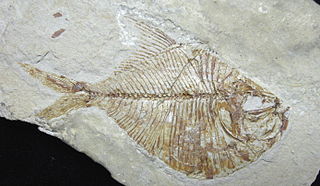
Lamprimorpha is a superorder of marine ray-finned fishes, representing a basal group of the highly diverse clade Acanthomorpha. Represented today only by the order Lampriformes, recent studies have recovered other basal fossil species of the group dating as far back as the Cenomanian stage of the Late Cretaceous. Some of these fossil taxa, such as the paraphyletic genus Aipichthys, are among the oldest known fossil acanthomorphs, and overall they appear to have been a major component of the marine fish fauna at that time. Lamprimorpha is thought to be the sister group to the superorder Paracanthopterygii, which contains cod, dories, and trout-perches; however, Lamprimorpha may instead be sister to Acanthopterygii.













